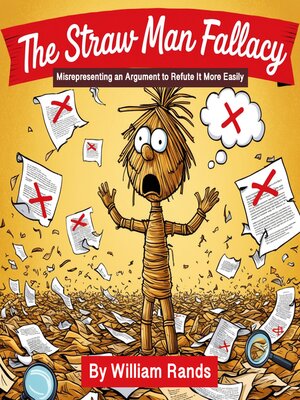The Straw Man Fallacy
audiobook (Unabridged) ∣ Misrepresenting an Argument to Refute It More Easily
By William Rands

Sign up to save your library
With an OverDrive account, you can save your favorite libraries for at-a-glance information about availability. Find out more about OverDrive accounts.
Find this title in Libby, the library reading app by OverDrive.



Search for a digital library with this title
Title found at these libraries:
| Library Name | Distance |
|---|---|
| Loading... |
The Straw Man Fallacy is one of the most pervasive forms of logical misrepresentation, often employed to simplify complex arguments for easier refutation. At its core, this fallacy involves constructing a distorted or exaggerated version of an opponent's position, subsequently attacking this weakened argument instead of addressing the original point. The technique, though logically flawed, can be compelling, as it plays on cognitive biases and simplifies discourse in ways that resonate with audiences.
This fallacy derives its name from the image of a straw man, an effigy made of straw that lacks the strength or integrity of a real person. Just as a straw man is easily knocked down, so too is the misrepresented argument—a weaker version created not to understand but to refute. While the method is intellectually dishonest, its use is widespread, spanning casual conversations, heated debates, and high-stakes political rhetoric.
Understanding the Straw Man Fallacy begins with recognizing its foundational elements. First, the original argument is altered, often stripped of nuance or exaggerated to absurdity. For example, an individual advocating for environmental regulations might have their argument reframed as "wanting to eliminate all economic progress," a position they never claimed. This misrepresentation not only undermines meaningful dialogue but also diverts attention away from the core issue.







